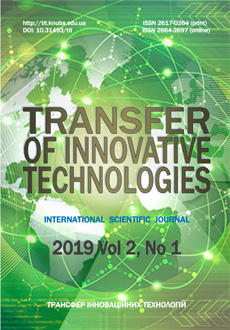On calculation of the pseudo-inverse econometric models matrix with a rank deficient observation matrix
DOI:
https://doi.org/10.31493/tit1921.0302Keywords:
econometric model, matrix of incomplete rank, Gauss-Markov conditions, pseudoinverse matrixAbstract
The approach to estimating the parameters of linear econometric dependencies for the case of combining a number of special conditions arising in the modeling process is considered. These conditions concern the most important problems that arise in practice when implementing a number of classes of mathematical models, for the construction of which a matrix of explanatory variables is used. In most cases, the vectors that make up the matrix have a close correlation relationship. That leads to the need to perform calculations using a rank deficient matrix. There are also violations of the conditions of the Gauss-Markov theorem. For any non-degenerate square matrix X , an inverse matrix 1 X is uniquely defined such that, for random right-hand sideB , the solution of the system XB is vector 1 Xb . If X is a degenerate or rectangular matrix, then there is no inverse to it. Moreover, in these cases, the system XB may be incompatible. Here it is natural to use a generalization of the concept of the inverse transformation, which is formulated in terms of the corresponding problem of minimizing the sum of squared residuals. In the same case, having a QR decomposition, one can use the formula 1 1 X R Q . In addition, it is recommended for specific calculations. With an incomplete rank, the most convenient form of representation 1 X follows from the expansion in characteristic numbers. If X U V with non-zero characteristicnumbers, then X V U . We propose an alternative X calculation method, which relies on the decomposition of a rank deficient matrix into the product of two matrices of full rank.
References
Johnston J., 1971. Econometric Methods. MeGraw-Hill, 437.
Lawson C.L., Hanson R.J., 1974. Solving Least Squares Problems. Prentice-Hall, Inc., Englewood Cliffs N.J., 340.
Voevodin V.V., 1977. Vychislitel`nye osnovy lineinoi algebry [numerical foundations of linear algebra]. Moscow, Nauka, 303 (in Russian).
Kutovyi V.O., 2001. Pro teoremu HaussaMarkova u vypadku vyrodzhenoi matrytsi sposterezhen. Dopov. Dokl. Akad. Nauk Ukraine, No.5, 19-22 (in Ukrainian).
Kutovyi V.O., 2000. Pro zastosuvania instrumentalnyh zminnyh dlia vyznachenia parametriv zagalnoi liniynoi modeli Modeliuvayia ta informaciyni systey v economici. Kyiv.KNEU, No.64, 168-173 (in Ukrainian).
Kutovyi V.O., Roskach O.S., 1997. Matematyko-statystychne uzagalnenia pokrokovyh metodiv pobudovy predyktornyh prostoriv. Mashynna obrobka informacii, No.59, 140-149 (in Ukrainian).
Kutovyi V.O., Roskach O.S., 1997. Pro zastosyvania na EOM algorytmu FarraraGlaubera.Mashyna obrobka informacii. Kyiv, KNEU, No.61, 142-149 (in Ukrainian).
Kutovyi V.O., 1999. Pro umovy zastosuvania teoremy Gaussa-Markova. Vcheni zapysky Kyiv, KNEU, No.2C, 206-208 (in Ukrainian).
Kutovyi V.O., 2001. Pro efektyvnist zmishenyh ocinok parametriv economichnyh modelei. Kyiv, KNEU, No.3, 324-326 (in Ukrainian).
Aitken A.C., 1993. One Least-squares and Linear Combination of Observations. Proc., Royal Soc., Edinburgh, No.55, 42-46.
Pavies O., 1993. Statistical moments in research and production, New York, 1957.
Plackett R., 1960. Principles of regression analysis. Oxford.
Weatherburn C.E., 1961. A first course in mathematical statistics. University Press, Cambridge, brosch, 18s, 6d, 278.
Hamilton W., 1964. Statistics in physical science. New York, 1964.
Jürgen Grob., 2004. The general Gauss-Markov model with possible singular dispersion matrix. Statistical Paper, No.45, 311-336.
Farrar D.E., Glauber R.R., 1967. Multicollinearity in Regression Analysis: The Problem Revisited. Review of Economics and Statistics, 49(1), 92-107. 17. Yangge Fian, Beisiegel M., Dagenais E., Haines C., 2008. On the natural restrictions in the singular Grauss-Markov model. Statistical Papers, Vol.49, 553-564.
Silvey S.D., 1969. Multicallinearity and Imprecise Estimation. Journal of the Real Statical Society, Series B, No.31, 539-552.
Kutovyi V.O., Katunina O.S., 2017. Projecting predicators for econometric models with matrix of supervisory range obstructions. Моделювання та інформаційні системи в економіці, КНЕУ, No.94, 178-194.
Viktor Kutovyi, Olga Katunina, Oleg Shutovskyi, 2018. Analysis of the multicollinear econometric model parameters with a rank deficient observation matrix. Transfer of Innovative Technologies, Vol.1(1), 75-88. 21. Ахиезер Н.И., Глазман И.И. Теория линейных операторов в Гильбертовом пространстве. Москва, Наука, 543.
Downloads
Published
How to Cite
Issue
Section
License
Copyright (c) 2020 Transfer of Innovative Technologies

This work is licensed under a Creative Commons Attribution-NonCommercial-NoDerivatives 4.0 International License.
Our journal abides by the CREATIVE COMMONS copyright rights and permissions for open access journals.
Authors, who are published in this journal, agree to the following conditions:
1. The authors reserve the right to authorship of the work and pass the first publication right of this work to the journal under the terms of a Creative Commons Attribution License, which allows others to freely distribute the published research with the obligatory reference to the authors of the original work and the first publication of the work in this journal.
2. The authors have the right to conclude separate supplement agreements that relate to non-exclusive work distribution in the form in which it has been published by the journal (for example, to upload the work to the online storage of the journal or publish it as part of a monograph), provided that the reference to the first publication of the work in this journal is included.




